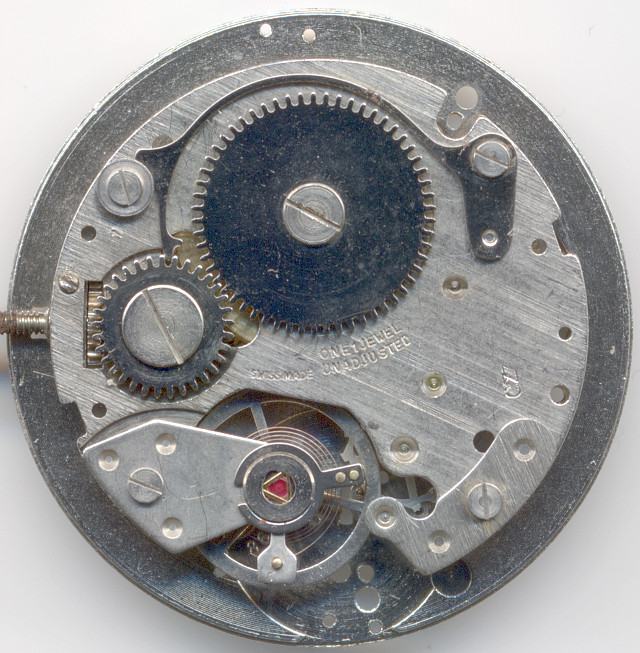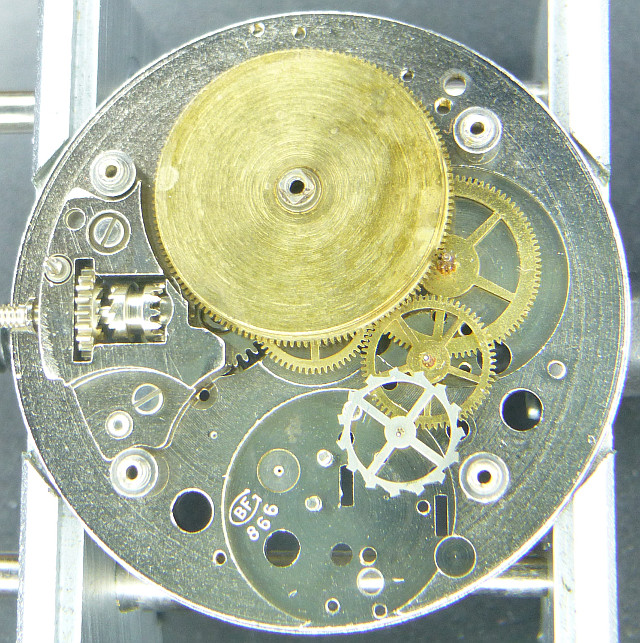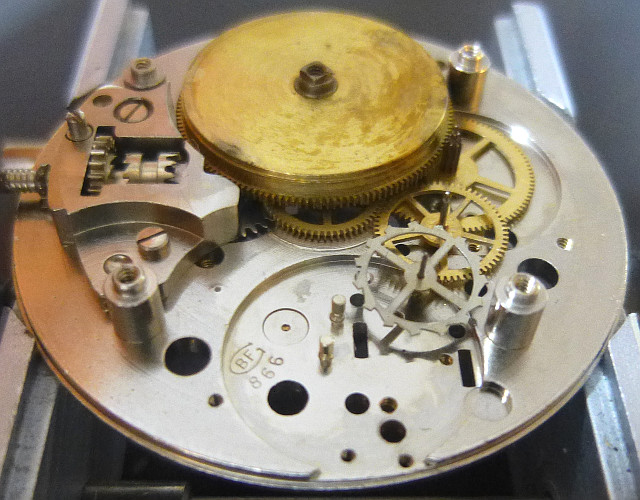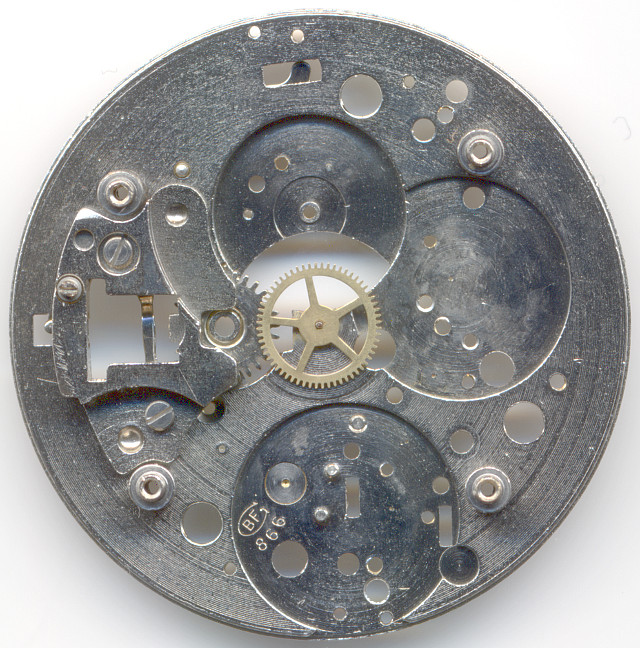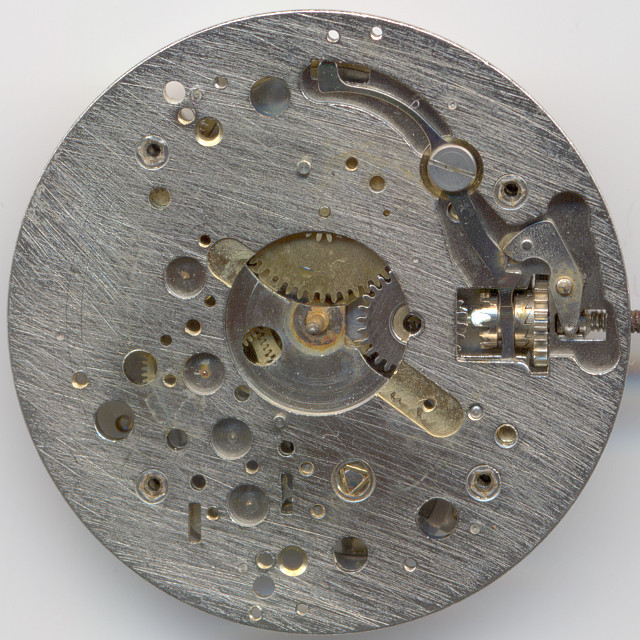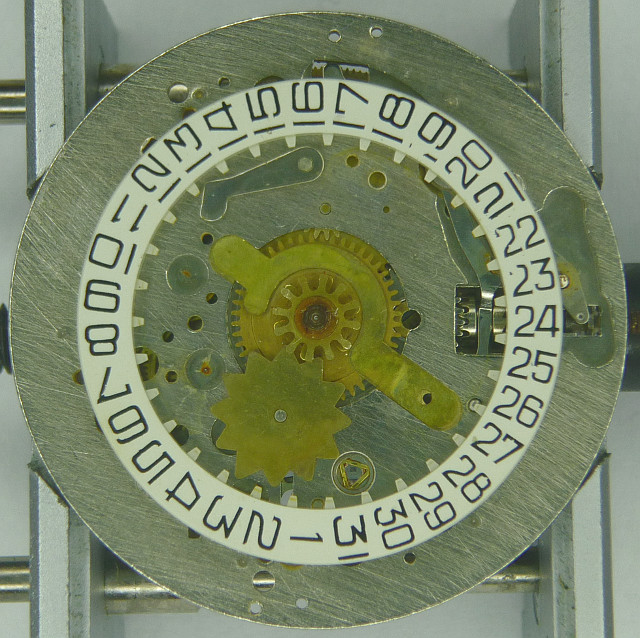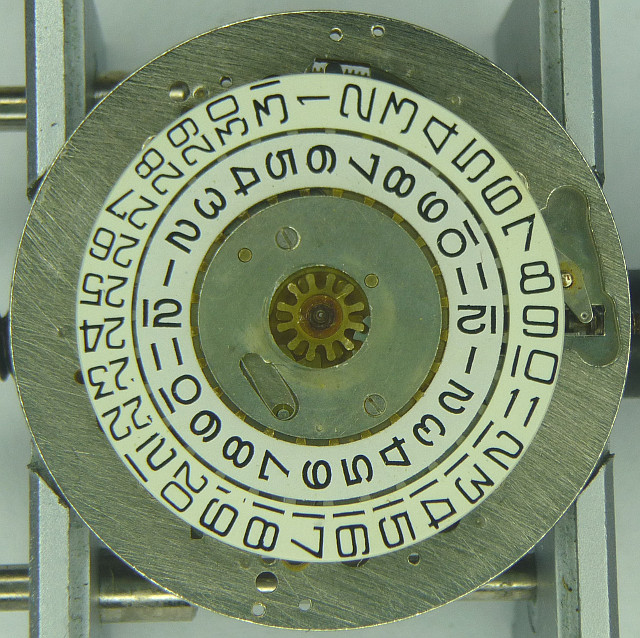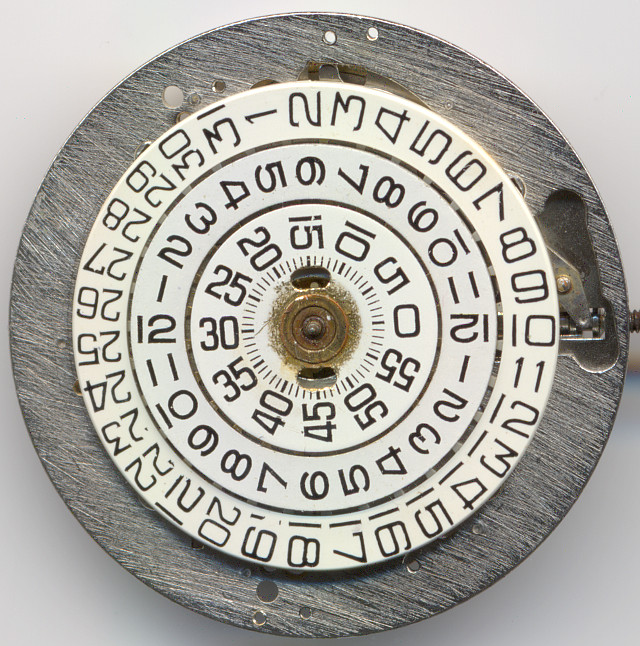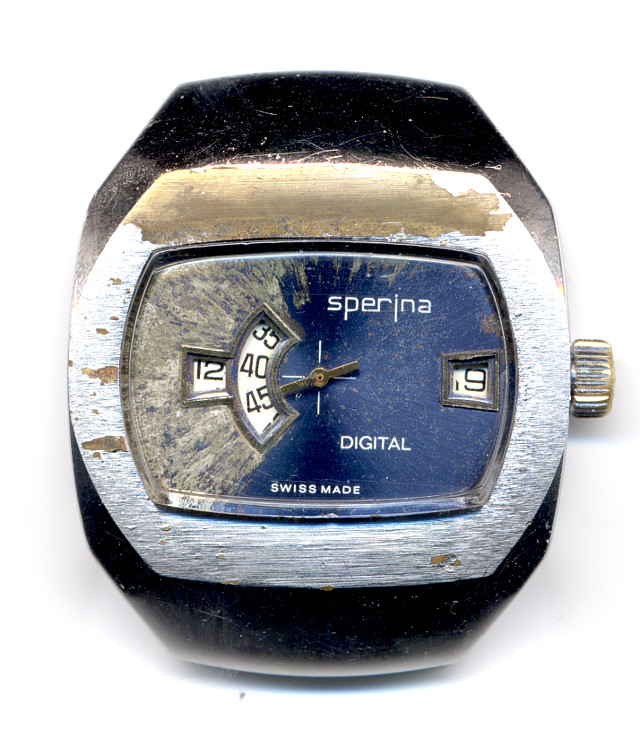Description
The Baumgartner 866 CLD DIG, which was launchen probably in the late 1960ies, is one of the most unusual variants of the very popular caliber 866. With a digital hour and minute indication and a calendar, it it maximally equipped.
Video on YouTubeAs common on Baumgartner movements, this caliber is also a pin lever movement with a Roskopf construction, which means, that the minute wheel is located on the dial side is an driven, like the hour wheel, by a gear on the mainspring barrel, which is connected with a slipping coupling.
Due to this construction, the mainspring barrel can be very large and even overlap the center of the movement, and together with an also large second wheel, one transmission step can be saved.
The center second is indirectly driven, 1:1 by the outer teeth of the third wheel, which is located at 3:30 o’clock. There’s no flattering or bucking, even without a friction spring.
The realisation of this movement is very simple; besides the upper balance wheel bearing, there are no bearing jewels, but only simple drillings on the plates. For a watchmaker, it’s a bit time consuming to re-assemble the movement, but these cheap movement weren’t supposed to be repaired at all.
The balance, which is equipped with a large finger, beats slowly with 18000 A/h and is on both ends secured with a Novodiac shock protection system. On the dial side, there’s a oddity: Instead of using a ruby, a metal plate is used. This is only a few cents cheaper, than using a ruby bearing here, but if many thousands of these movements were sold, the price savings were a bit effective.
On the dial side, when the date ring is put away, you can see the yoke winding system and the two gears on top of the mainspring barrel, which drive the hour and minute wheels at the center of the movement.
The date indication mechanism is very simple: A star shaped wheel at 6:30 is driven by the hour wheel. It containts one longer tooth, which advances the date every 24 hours counterclockwise. The lever with a spring at 11 o’clock (the spring, which can fly very well, is not yet mounted) ensures proper locking of the date disc. There’s no quickset possibility for the date.
The same mechanism in a smaller implementation is used for the hour ring. The interlocked minute wheel drives a switching star at 3:30 o’clock, which also contains a longer tooth and advances the hour ring counterclockwise. There’s also a lever with spring to lock the ring. Of course, there’s no quickset possibility.
Here you can see how the dial side looks, when the minute disc is put away, and you can also see the recess for the spring of the minute ring lever.
The minute disc doesn’t jump but slides, just like a minute hand.
In the lab
Timegrapher result
Only in the position "dial up", the rates are perfect. Interestingly, this is the only position, where the only bearing ruby in the movement is effective. All other position show more or less poor rates, probably due to the water damages.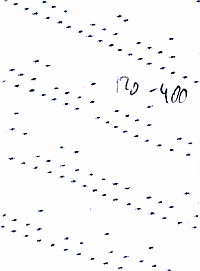
crown right (12 up)
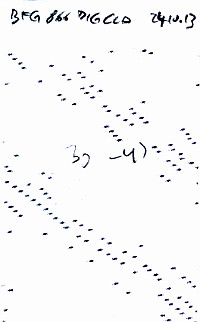
crown up (3 up)
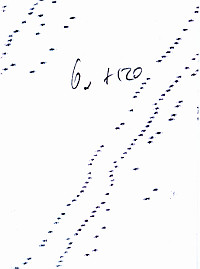
crown left (6 up)
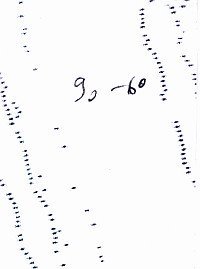
crown down (9 up)
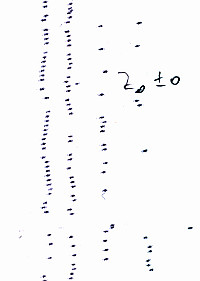
dial up
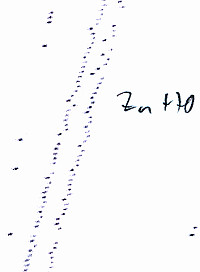
dial down
| horizontal positions | |
|---|---|
| dial up | -+0 s/d |
| dial down | +70 s/d |
| vertical positions | |
| crown right (12 up) | -400 s/d |
| crown up (3 up) | -240 s/d |
| crown left (6 up) | +120 s/d |
| crown down (9 up) | -60 s/d |
Technical data
| Manufacturer: | Baumgartner |
| Caliber: | 866 CLD DIG |
| Caliber base: | Baumgartner 866 |
| Size: | 13,5''' (measured: 30,7mmmm) |
| A/h: | 18000 |
| lift angle: | 44° |
| Number of jewels: | 1 |
| Escapement: | Pin lever |
| Balance types: |
Nickel anular balance |
| Shock protection(s): |
Novodiac |
| Balance bearing / direction hairspring: | Counterclockwise |
| Moveable stud: | no |
| Adjust mechanism: | Hairspring key |
| Construction: |
|
| Construction type: | pillar construction |
| Winding mechanism: | yoke winding system |
| Setting lever spring: | 1 hole(s) |
| Features: |
|
